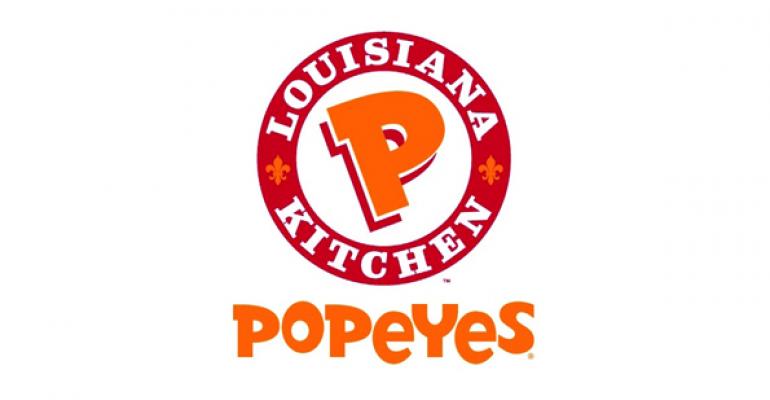Perhaps because he grew up in New Orleans in the 1970s, just like the Popeyes Louisiana Kitchen restaurant chain he now leads as president, Ralph Bower is adamant that life begins at 40 for Popeyes.
“You don’t see too many 40-year-old brands with this opportunity for growth,” said Bower, who was promoted from chief operating officer to president of the U.S. division for Popeyes on March 6. “We could at least double in size. We were one of the fastest-growing QSRs last year, and we can continue that this year.”
The quick-service chain celebrated its 40th anniversary with a one-day promotion last month that offered eight pieces of the brand’s signature bone-in fried chicken for $5.99. Further customer-facing initiatives include a remodeling program.
Parent company AFC Enterprises Inc. achieved annual earnings growth of 5.7 percent to $24.2 million in 2011, on the strength of a 3.1-percent increase in global same-store sales for the Popeyes chain. Bower said that third straight year of annual same-store sales improvement came from a commitment to driving franchisee profitability, leadership training and better site selection.
Bower spoke with Nation’s Restaurant News about how to maintain that momentum in 2012.
Is there one initiative you would consider your top priority as Popeyes’ new president?
The focus on franchisee profitability probably differentiates us the most. That’s not an altruistic thing. We do that because that’s the best way to build a brand. If the franchisees are pleased that they’re making more money, they’ll build more restaurants. About 75 percent of our new development comes from existing partners.
The average unit volumes in some of our newer restaurants are about 40 percent higher than the system average.
How did you boost average unit volumes and get higher opening volumes when quick-service consumers have suffered during the recent recession?
A couple of things came together to bring that about. When the market crashed and access to capital become much more difficult, the projects we focused on were only the very best we had going. We made sure each location was successful so that folks would want to build more of them. We became focused with rigor and discipline around site selection and our development process. After more than 60,000 customer intercepts, we could really develop a psychographic profile of our customer, which helped us model how our restaurants would do in new trade areas.
The more qualitative piece of this is that we’ve gotten really good at saying no to sites. In the past, when somebody wanted to build a restaurant with us, we were happy with just that. But today, we say no twice as much as we say yes. If you can hold out for that dominant piece of real estate, you get far better returns.
Your eight-piece chicken offer for $5.99 was a very aggressive recent promotion. Is the name of the game still driving traffic with that kind of value, or do you plan to start building the average check more?
The name of the game is making sure that, with consumer confidence where it is today, you don’t lose traffic. Customers are sensitive to check increases today like never before. If you look at all the QSR brands last year, I think there’s a correlation between check increase and traffic decrease. But you need profitable value. Consumers have to feel they’re getting good value, but franchise partners have to be making money.
Customers want three things: quality of product, quality of service experience and a quality environment — and then, what do they pay for all three? All our recipes come from Louisiana, so they’re distinctive and spicy and are a signature for us. We have improved our service scores dramatically in the past three years, but we’re still focused on speed of service, which was the No. 1 reason for dissatisfaction among customers.
When you talk about the environment, does that mean a remodeling program?
We hope to remodel more than one-third of the system this year. We kept the current economic environment in mind, so it’s mostly an interior remodel with some signage changes. We think it’s going to dramatically change the customer experience folks have in our restaurants, for less than $100,000 to the franchisee. We have different incentives in place, like a loan guarantee program, and we’re extending the remodel term on franchise agreements.
Contact Mark Brandau at [email protected].
Follow him on Twitter: @Mark_from_NRN

